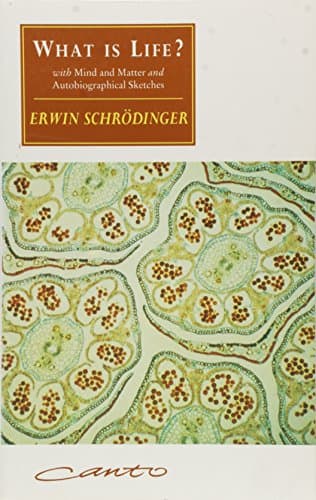
Erwin Schrödinger, What Is Life?
Value For Money
Erwin Schrödinger, What Is Life?
When you purchase through links on our site, we may earn an affiliate commission. Here's how it works.

User Reviews
Value For Money
What Is Life? Erwin Schr Dinger Cambridg
What Is Life?
Erwin Schr dinger
Cambridge University Press (2002)
The structure of DNA and the genetic code may have alluded us for some time more if Crick had not read Erwin Schr dinger's "What Is Life?" [1]. The research lead that Crick got by doing so was how a small set of repeating elements could give rise to a large number of combinatorial products, a mathematical relationship that Schr dinger illustrated using the Morse Code, based on an idea that he had actually got from the visionary work of Max Delbr ck.
Delbr ck, Schr dinger and Crick were physicists with an enthusiasm for tackling the unknown for the natural world. Crick's own motivation came directly from reading "What Is Life?" [2]. It seemed reasonable to make the cross-over as the infant field of biochemistry was bound to be governed by the same chemical and physical laws revealed in other, non-biological, disciplines. This was especially true given the progressive focus of biology on the increasingly small, until an effective convergence of scales in the studies of the biologically relevant on the biologically irrelevant. Hence the justification for Schr dinger's unspecific book title.
Although some of the notions in the book have been superseded by modern science, this remains a classic, written with great insight and modesty (Schr dinger downplays his potential as a biologist), and is worth the read if only as a portal into the minds of those luminary workers.
By the time Watson and Crick were piecing together the jigsaw that would lead to their grand discovery, the far-reaching potential of Schr dinger's code script had been aligned with Chargaff's finding of a variable sequence of nucleotide bases, and the stage was set for that immortal terminal sentence, "It has not escaped our notice that the specific pairing we have postulated immediately suggests a possible copying mechanism for the genetic material."
-------------
[1] Francis Crick (1989) What Mad Pursuit. Penguin.
[2] James Watson (1981) The Double Helix. Weidenfeld and Nicholson.
Q&A
There are no questions yet.